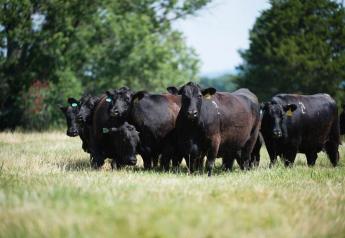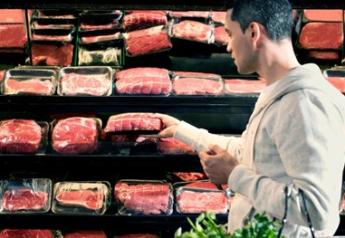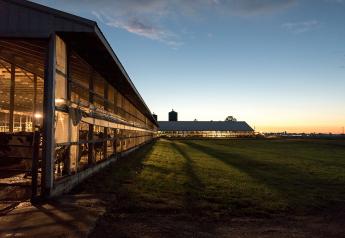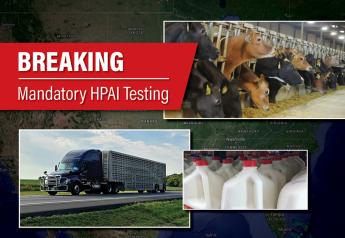Market Highlights: Fed Cattle Demand Remains Strong
FED CATTLE: Fed cattle traded steady compared to last week on a live basis. Prices on a live basis were mainly $123 to $124 while dressed prices were mainly $191 to $192.
The 5-area weighted average prices thru Thursday were $123.05 live, up $0.09 from last week and $192.60 dressed, up $0.26 from last week. A year ago prices were $102.72 live and $159.94 dressed.
Packers bid early and often on cattle this week in hopes of slowing the recent price escalation, and it seemed to work at least temporarily. The margins remain favorable for cattle feeders with a steady price this week, but packers were looking for anyway to slow the ratcheting up of finished cattle prices that have outpaced price movements in the boxed beef market.
It is hard to tell if the early cattle trade this week was the reasoning for softening on December live cattle futures or if packers would have benefited from waiting until December futures declined about $5 from last week’s close. Regardless of what is leading the market, it would appear finished cattle prices will remain strong the next few weeks.
BEEF CUTOUT: At midday Friday, the Choice cutout was $214.58 up $1.84 from Thursday and up $6.80 from last Friday. The Select cutout was $197.21 down $1.09 from Thursday and up $3.92 from last Friday. The Choice Select spread was $17.37 compared to $15.49 a week ago.
The modest gains in the boxed beef market provided packers a little contentment as they were able to purchase cattle at steady prices compared to last week. Packers may be forced to increase wholesale beef prices due to higher cattle prices, and now is the time to do it as retailers and food service participants are preparing to make holiday purchases.
Many retailers will be coming in hot on the beef market in the next week or two due to expectations of higher prices following Thanksgiving. Thus, packers may need to be innovative in cash negotiations the next few weeks. The unknown in this situation is how much beef packers already have forward contracted for the holiday purchasing period.
If packers have a lot of beef contracted then they will buy cattle regardless of the price to meet the contractual agreements. The beef cutout will be carried by demand for rib and loin cuts the next several weeks. This will push spot prices for the rib and loin higher before they soften following holiday purchases.
OUTLOOK: Feeder cattle futures are once again the talking point of the day. Feeder cattle futures have been riding the coattails of live cattle futures the past several weeks which included a rapid escalation and now a small decline in the past week.
The slightly softer prices in feeder cattle futures should not be of much concern to sellers as the market for cattle ready to enter the feedlot remains solid at this time. The mixed traded on feeder cattle futures did result in mixed results on Tennessee weekly auctions depending on the day of the week the sale occurred. Regardless, the calf market remains seasonally strong for freshly weaned steers.
Alternatively, it appears heifer prices are at a larger discount than is typical this time of year. With the expectation that the discount will narrow over the next several months and certain the discount will narrow as weight increases, cow-calf producers may consider holding heifers longer than steers while stocker producers may see this as an opportunity to put together a group of heifers to background. It cannot be reiterated enough, the market continues to provide producers value when adding weight in the short term. It is not certain how long this particular scenario will last, but producers should take advantage of this situation since it rarely occurs during the fall marketing time period.
Attempting to look further into the future is difficult and less accurate, but producers could hedge nice profits on feeder cattle looking into the first two quarters of 2018. If one can stand to continue assuming the risk then it may be best to sit tight at this juncture as the feeder cattle market has potential for higher prices. If a producer would prefer to transfer that risk to someone else, then hedging cattle for sale in early 2018 can be done with acceptable returns. This decision comes down to trying to squeeze every dollar out of an animal or being content with being profitable. There is risk in both decisions.
ASK ANDREW, TN THINK TANK: As a follow up to last week’s question concerning weigh-in versus weigh-out markets, Dr. Emmit Rawls reminded me of some research conducted in Tennessee by Dr. Dan McLemore where he found prices on weigh-out markets to be 2 percent higher than prices at weigh-in markets. This price difference is largely due to cattle at weight-out markets having experienced increased shrink compared to those at weigh-in markets. On another note, several questions related to Pasture, Rangeland and Forage insurance have been asked in the past couple of weeks. In brevity, this is an insurance program for pasture and forage producers. It provides insurance against below average precipitation and results in an indemnity payment meant to help pay for feedstuffs to replace the lost forage. November 15th is the last day to sign up for PRF insurance for the 2018 calendar year.
Please send questions and comments to agriff14@utk.edu or send a letter to Andrew P. Griffith, University of Tennessee, 314B Morgan Hall, 2621 Morgan Circle, Knoxville, TN 37996.
FRIDAY’S FUTURES MARKET CLOSING PRICES: Friday’s closing prices were as follows: Live/fed cattle –December $120.58 -1.90; February $126.75 -1.78; April $127.10 -1.65; Feeder cattle –November $158.48 +0.00; January $157.18 -0.68; March $155.08 -0.33; April $155.25 -0.45; December corn closed at $3.44 up $0.02 from Thursday.










